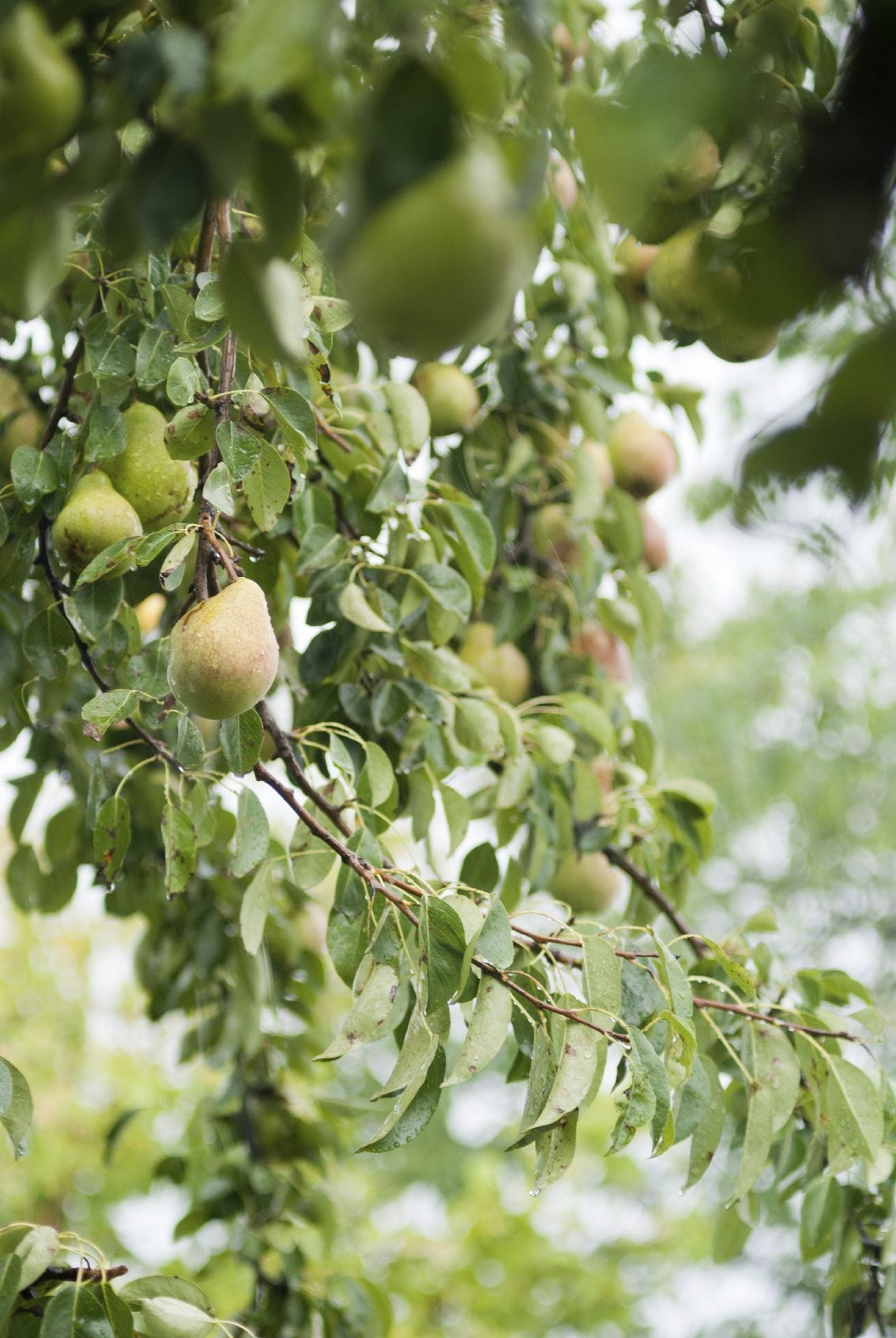Pear Tree Pruning - How And When Do You Prune A Pear Tree


Pear trees are ideal for backyard orchards because of their manageable size and breathtaking display of spring flowers. Standard trees rarely exceed 18 feet (5.5 m.) in height, and many cultivars are much shorter. Proper pruning improves the appearance, health, and yield of these fruit trees. So when do you prune a pear tree? Keep reading to learn more about when and how to prune pear trees in the home landscape.
When Do You Prune a Pear Tree?
Pruning a pear tree begins in late winter before the buds begin to swell. Earlier pruning may encourage excessive vegetative growth and suckering in spring and summer. It also increases the chances of winter injury to the pruning sites. Limit spring and summer pruning to light thinning and try to avoid trimming pear trees after midsummer.
Pear tree pruning also begins at planting time. Cut back young, unbranched trees 33 to 36 inches (84-91.5 cm.) above the ground to encourage good branching. If your new tree has plenty of branches, remove those that are less than 18 inches (45.5 cm.) from the ground and those with crotches of less than 60 degrees.
How to Prune Pear Trees
As a young pear tree grows, the main stem of the plant should always be taller than the surrounding branches. Pear tree branches naturally grow upright, but the branches spread as it begins to bear fruit. The weight of the fruit pulls the branch down into a more horizontal position.
You can help this process by pulling the branch down and tying it to a stake in the ground with twine. Pad the twine that encircles the branch to avoid damage. If you can't achieve an angle of at least 60 degrees between the branch and the trunk of the tree, then remove the branch.
Pruning and training to improve the spread of the branches increases the amount of sunlight that reaches the center of the tree. Your tree will produce fruit sooner and in greater quantities as a result. Keeping the canopy of the tree open makes it easier for sprays to reach every part of the tree. It also allows good air circulation around the branches, and this helps prevent diseases.
Pruning wounds in older trees provide an entry point for fire blight, which is a devastating disease that can kill a tree. Limit pruning of mature trees in areas where fire blight is a problem. Use as few cuts as possible to remove damage and thin the canopy. Remove suckers that grow from the base of the tree or in the crotches as they appear.
Gardening tips, videos, info and more delivered right to your inbox!
Sign up for the Gardening Know How newsletter today and receive a free copy of our e-book "How to Grow Delicious Tomatoes".

Jackie Carroll has written over 500 articles for Gardening Know How on a wide range of topics.
-
 Looking For Plants To Give You The Soft And Fuzzies? Try These 5 Fuzzy Leaf Plant Options
Looking For Plants To Give You The Soft And Fuzzies? Try These 5 Fuzzy Leaf Plant OptionsLovers of texture, drama, silver foliage and tactile plants will adore these special sensory garden additions. These fuzzy leaf plant options will leave you all aglow
By Susan Albert
-
 Get Ready For A Summer Of Hummers! Grow These Full Sun Hummingbird Plants and Flowers
Get Ready For A Summer Of Hummers! Grow These Full Sun Hummingbird Plants and FlowersIf you’re lucky enough to enjoy a sunny backyard, make sure you are maxing out on your pollinator opportunities and grow these full sun hummingbird plants and flowers
By Tonya Barnett